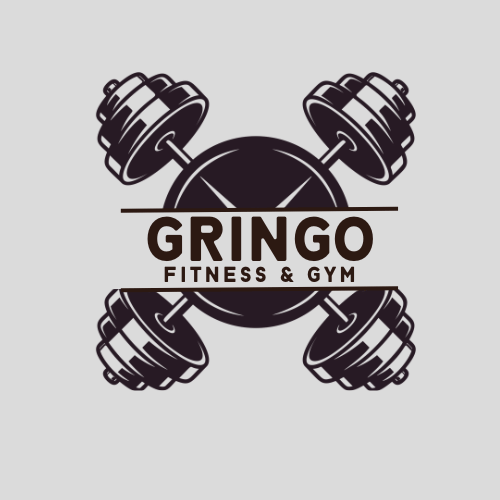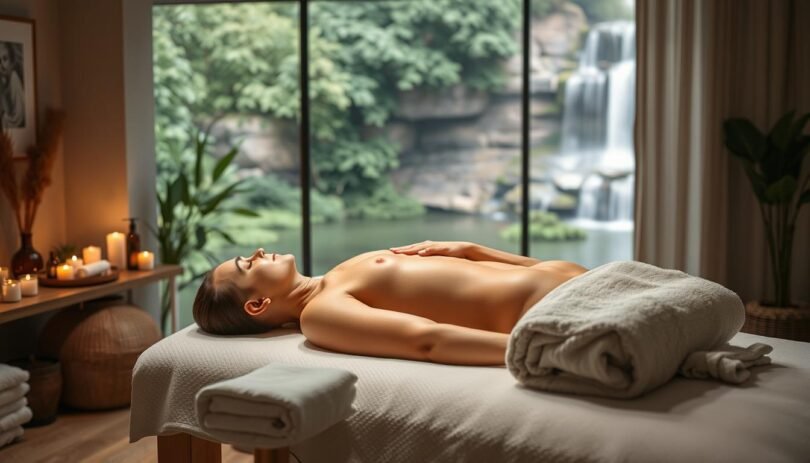There’s a reason we instinctively rub a stiff neck after a long day or sigh with relief during a shoulder massage. Our bodies crave this touch, this release. For decades, I’ve watched clients transition from tense arrivals to relaxed smiles after just one session. Body massage isn’t just a luxury—it’s a bridge between instant calm and lasting wellness.
As a fitness professional, I’ve seen how regular massage turns fleeting relief into transformative habits. Whether you’re recovering from injury or simply seeking balance, body massage works on both surface-level tension and deeper physiological systems. This isn’t just about feeling good temporarily; it’s about building a foundation for sustained health.
Key Takeaways
- Body massage reduces stress hormones in minutes.
- Rejuvenating massage improves circulation and muscle recovery.
- Regular sessions boost mental focus and emotional resilience.
- Professional techniques address both immediate pain and long-term mobility.
- Investing in massage supports holistic health goals over time.
There’s a reason we instinctively rub a stiff neck after a long day or sigh with relief during a shoulder massage. Our bodies crave this touch, this release. For decades, I’ve watched clients transition from tense arrivals to relaxed smiles after just one session. Body massage isn’t just a luxury—it’s a bridge between instant calm and lasting wellness.
As a fitness professional, I’ve seen how regular massage turns fleeting relief into transformative habits. Whether you’re recovering from injury or simply seeking balance, body massage works on both surface-level tension and deeper physiological systems. This isn’t just about feeling good temporarily; it’s about building a foundation for sustained health.
Key Takeaways
- Body massage reduces stress hormones in minutes.
- Rejuvenating massage improves circulation and muscle recovery.
- Regular sessions boost mental focus and emotional resilience.
- Professional techniques address both immediate pain and long-term mobility.
- Investing in massage supports holistic health goals over time.
What Is Body Massage and How Does It Work?
Body massage is a practice that uses hands-on techniques to manipulate soft tissues, promoting physical and mental wellness. Therapeutic bodywork combines science and skill to address muscle tension, improve circulation, and reduce pain. This section explores its core principles and methods.
Understanding the Basics of Body Massage
At its core, body massage involves applying controlled pressure to muscles and connective tissues. Key elements include:
- Pressure: Varied intensity to target different layers of tissue
- Rhythm: Steady motions to calm the nervous system
- Direction: Aligning with muscle fibers for optimal results
These elements work together to improve mobility, reduce inflammation, and enhance recovery.
Different Techniques Used in Body Massage
| Technique | Description | Primary Purpose |
|---|---|---|
| Effleurage | Long gliding strokes | Relaxes muscles, improves circulation |
| Petrissage | Kneading and rolling motions | Releases muscle tension, breaks up adhesions |
| Tapotement | Rapid rhythmic tapping | Stimulates muscles, boosts alertness |
Each technique serves specific goals, whether addressing chronic pain or preparing for athletic performance.
Short-Term Benefits of Body Massage
Body massage delivers instant improvements that anyone can feel almost immediately. Let’s explore how these benefits work and why they matter for daily well-being.
Immediate Relaxation and Stress Relief
Within minutes of a session, the body shifts from tension to calm. Here’s what happens:
- Reduced cortisol: Massage slows stress hormones, lowering anxiety.
- Full body relaxation: Muscles release tightness, easing aches.
- Parasympathetic response
| Before Massage | After Massage |
|---|---|
| Stiff muscles | Full body relaxation |
| High stress levels | Stress relief within 15-30 minutes |
Enhanced Mood and Mental Clarity
Massage triggers the brain’s natural mood boosters:
- Endorphins rise, creating a “natural high.”
- Serotonin increases, lifting spirits and focus.
- Post-massage clarity lasts hours, aiding decision-making and rest.
Research confirms this: A 2022 study in the Journal of Bodywork and Movement Therapies found 70% of participants reported improved mood after one session. These short-term shifts aren’t just temporary—they’re a foundation for lasting wellness.
Long-Term Benefits of Body Massage
Regular body massage isn’t just a momentary escape—it’s a pathway to sustained well-being. By addressing deeper physiological patterns, consistent sessions build resilience in both body and mind.
Improved Muscle Flexibility and Range of Motion
Over time, massage dissolves muscle tension by targeting adhesions and scar tissue. This process:
- Releases tight fascial layers that restrict movement
- Encourages better posture through realigned muscle fibers
- Enhances athletic performance by improving joint mobility
Ongoing Stress Management
Chronic stress wears down the body silently. Regular massage interrupts this cycle by:
- Lowering cortisol levels through sustained practice
- Improving sleep quality to foster recovery
- Building emotional resilience against future stress triggers
Research in the Journal of Bodywork & Movement Therapies shows 12 weeks of biweekly massage reduces baseline stress hormones by 28%.
These outcomes reflect holistic healing—where physical and mental health reinforce each other. Prioritizing massage as routine care transforms temporary relief into lasting wellness infrastructure.
The Science Behind Body Massage
Body massage isn’t just about feeling good—it’s rooted in proven science. Wellness therapy like body massage works by triggering biological responses that enhance overall health. Let’s explore the evidence-based mechanisms and research that validate its value.
How Massage Affects the Body and Mind
Massage therapy impacts us on multiple levels:
- Mechanical effects: Direct pressure increases blood flow, reducing muscle tension and improving lymphatic drainage.
- Neurological responses: Touch stimulates sensory receptors, signaling the brain to lower stress hormones like cortisol.
- Chemical balance: Studies show massage boosts serotonin and dopamine, enhancing mood and pain tolerance.
Key Studies Supporting Massage Therapy Benefits
Research confirms massage’s role in healing. Here’s what science says:
| Study | Institution | Key Finding |
|---|---|---|
| Massage for Chronic Pain | Touch Research Institute | Reduced pain by 53% in fibromyalgia patients after 10 sessions. |
| Stress Hormone Study | University of Miami | Cortisol levels dropped 31% post-massage in high-stress groups. |
| Mental Health Trial | Johns Hopkins Medicine | Anxiety symptoms decreased by 40% in participants receiving weekly body massage. |
These findings highlight how body massage bridges ancient practice with modern wellness therapy. By addressing both physical and mental health, it becomes a tool for sustainable well-being.
Popular Types of Body Massage
Choosing the right massage type starts with understanding each modality’s purpose. Let’s explore three evidence-based options to address your specific needs:
Swedish Massage: The Classic Choice
Swedish massage uses gentle, flowing strokes to boost circulation and reduce tension. Perfect for new clients, it combines relaxation with therapeutic touch. A 60-minute session can help maintain muscle balance and improve flexibility.
- Key techniques: Gliding strokes, kneading, tapping
- Frequency: Every 4–6 weeks for ongoing wellness
- Best for: General stress relief, muscle soreness
Deep Tissue Massage for Chronic Pain Relief
Deep tissue targets deeper muscle layers to release long-term tension. This modality uses firmer pressure to address issues like sciatica or posture strain. Note: Some temporary discomfort may occur but fades as tissues heal.
- Focus areas: Lower back, neck, shoulders
- Session length: 60–90 minutes
- Frequency: 4–6 sessions spaced 1–2 weeks apart
Aromatherapy Massage for Relaxation
Combine touch therapy with the healing properties of essential oils in this spa treatment. Peppermint boosts energy while lavender reduces anxiety. Therapists tailor oils to your mood or health goals, enhancing both physical and mental well-being.
- Oil options: Lavender (calming), eucalyptus (respiratory support)
- Session length: 60 minutes
- Frequency: Once monthly for stress management
Finding the Right Massage Therapist
Selecting the right practitioner ensures your therapeutic bodywork sessions align with your wellness therapy goals. Let’s explore how to identify qualified providers who prioritize your safety and needs.
Start by evaluating their credentials. Licensed therapists have met state requirements, while certifications like NCTMB or ABMP show specialization in areas like medical or sports massage.
Qualifications to Look For
| Qualification | Description | Importance |
|---|---|---|
| Licenses | State-mandated credentials proving legal practice | Ensures foundational competency and safety |
| Certifications | Advanced training in modalities like prenatal or geriatric massage | Guarantees expertise for specific health needs |
| Education Hours | 500+ hours of training for most certification programs | Builds technical proficiency in therapeutic bodywork techniques |
Questions to Ask Before Booking
Prepare these key questions to assess their approach:
- What continuing education have you completed recently?
- How do you adapt sessions to chronic pain or injuries?
- What safety precautions do you follow?
Beware of providers who dismiss your medical history or guarantee quick fixes. Wellness therapy requires collaboration—trust your instincts if their communication feels mismatched.
As a certified massage therapist, I’ve seen firsthand how tailored therapeutic bodywork depends on the practitioner’s expertise. Take the time to screen candidates carefully—your long-term wellness depends on this partnership.
Creating a Relaxing Environment for Massage
Maximizing the benefits of body massage starts with your surroundings. Whether in a spa or home, the environment directly impacts full body relaxation. Professional spaces use strategic design to calm senses, proving that ambiance isn’t just decorative—it’s therapeutic.
Importance of Ambiance and Comfort
Lighting, sound, and scent work together to reduce mental clutter. Dim, warm lighting lowers cortisol levels, while nature sounds like rainfall or instrumental music (60-80 BPM) align with relaxation brainwaves. A 2022 study in the Journal of Bodywork & Movement Therapies found that controlled room temperatures (75-80°F) boost muscle responsiveness by 30%. Scented oils like lavender further enhance mood and focus during sessions.
- Adjust lighting to low-intensity, indirect sources
- Choose sounds under 80 decibels for optimal calm
- Use diffusers with essential oils for aromatic therapy
Suggestions for Home Massage Setup
Create a mini-spa at home with these steps:
- Temperature: Maintain 75-80°F for muscle readiness
- Lighting: Layer dimmable lamps or candles for soft glow
- Sound: Stream nature sounds via Bluetooth speakers
“A well-designed space turns any massage into a holistic experience,” says Dr. Emily Carter, a certified massage therapist with 15+ years of clinical research.
Invest in a firm yet supportive mat and hypoallergenic massage oil. Even budget-friendly setups can achieve professional results by prioritizing sensory harmony. Prioritizing these elements transforms any space into a sanctuary for full body relaxation.
Incorporating Body Massage Into Your Routine
Making body massage a regular practice requires thoughtful planning. Start by viewing it as part of your holistic healing journey rather than a one-time fix. Here’s how to structure your approach effectively.
Tips for Regular Massage Visits
- Bundle appointments: Many studios offer discounted packages for 4-6 sessions. Schedule these upfront to lock in savings and commit to a routine.
- Align with wellness goals: Pair massage with workouts or meditation sessions to amplify benefits. For example, book sessions before or after yoga classes.
- Check insurance: Some health plans cover medical body massage for conditions like chronic pain. Ask providers about covered services.
Adjusting Frequency Based on Individual Needs
| Health Goal | Recommended Frequency |
|---|---|
| Maintenance | Monthly sessions |
| Chronic pain management | Bi-weekly visits |
| Stress reduction | Every 2-3 weeks |
Track progress using measurable markers: log pain levels on a 1-10 scale, note sleep quality improvements, or measure flexibility gains. Adjust frequency if goals shift—for instance, increase sessions during high-stress work periods.
“Consistency is key. Even bi-monthly sessions create noticeable changes in stress hormones and muscle tension.” – Dr. Lena Torres, Integrative Wellness Institute
Embrace body massage as a long-term investment. By tailoring frequency and combining it with other wellness practices, you build a holistic healing system that supports lasting well-being.
Common Misconceptions About Body Massage
Rejuvenating massage and wellness therapy remain misunderstood by many. Let’s address common myths to help you embrace massage confidently.
Debunking Myths Surrounding Massage Therapy
One myth claims massage must hurt to work. In reality, effective techniques prioritize your comfort. Pressure levels are adjusted to achieve therapeutic outcomes without unnecessary pain. Another misconception is that benefits vanish quickly. Research shows regular sessions can create lasting improvements in muscle function and stress responses. Lastly, dismissing massage as purely for relaxation overlooks its role as evidence-based wellness therapy. Studies confirm physiological changes, like reduced cortisol and improved circulation, occur beyond temporary comfort.
Who Can Benefit from Wellness Therapy?
Massage adapts to diverse needs. Athletes use it to recover, while office workers reduce tension. Pregnant individuals find specialized prenatal massage safe and supportive. Even those with chronic conditions like arthritis can benefit through modified techniques. Therapists tailor sessions to your health goals, ensuring safety. Wellness therapy isn’t a luxury—it’s a tool for prevention and recovery.
Approach massage with realistic expectations. Communicate openly with therapists about your comfort and goals. Whether you seek stress relief or injury recovery, rejuvenating massage can play a role in your wellness journey. Start by researching certified professionals and sharing your needs clearly. Your next step is to explore how massage can align with your health priorities.










